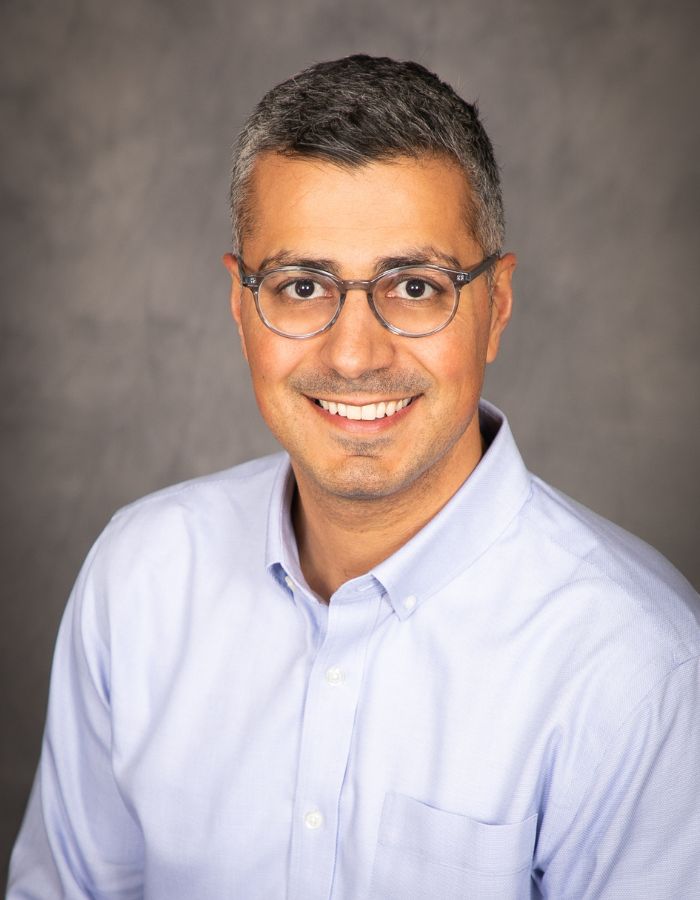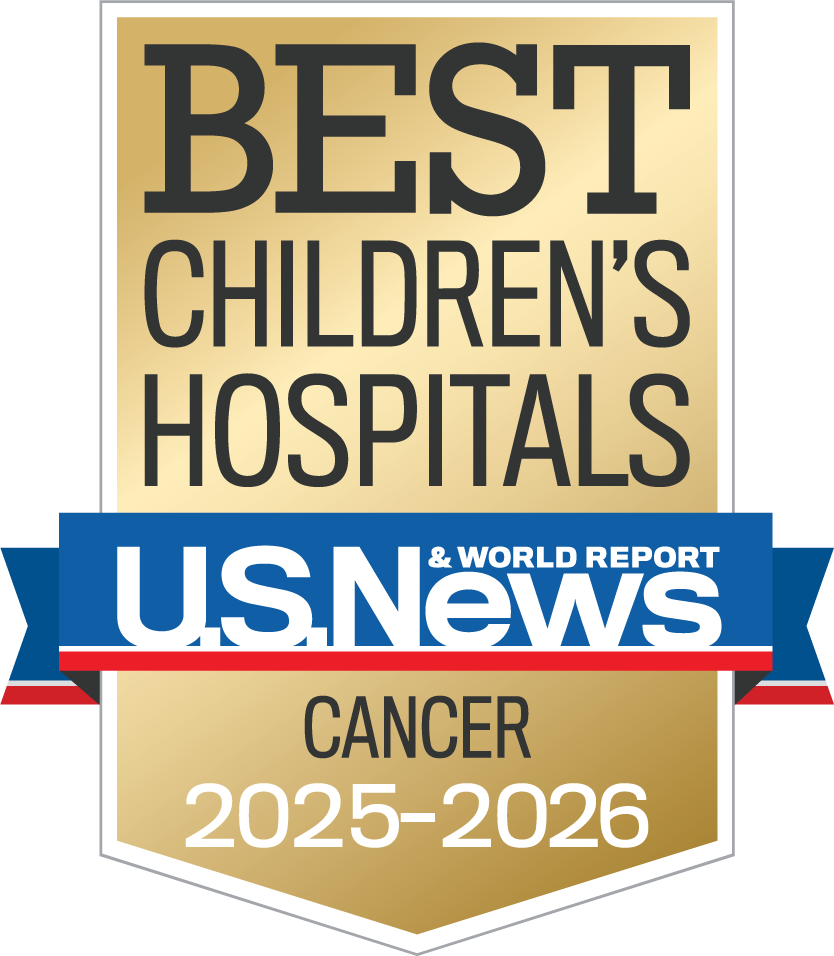Around 6% of all pediatric cancers are malignant primary bone tumors, compared to just 0.2% of adult cancers. Additionally, estimates suggest almost 20% of healthy children have benign bone tumors. Although most of those remain asymptomatic and many resolve without treatment, certain types of benign tumors can cause devastating health consequences. Advanced limb-sparing surgery at Children’s Hospital of Orange County (CHOC) provides hope for patients with both benign and malignant bone tumors.
“Some of the more complex, benign tumors we commonly see in pediatrics are locally aggressive and can cause deformity or other problems with the bone, including destroying the bone,” says Dr. Amirhossein Misaghi, pediatric orthopedic oncologist with the CHOC Orthopaedic Institute. “Managing malignant tumors such as osteosarcomas or Ewing sarcomas is even more challenging, because you are not just treating the cancer but managing the child’s remaining growth.”
Pediatric orthopedic oncology makes a difference
The rate of bone tumors reaches its highest point around age 15 — the same time as the average peak of adolescent growth spurts.
“While kids are still growing, their bones are growing in length and diameter, which poses certain challenges for orthopedic oncology,” Dr. Misaghi says. “With benign tumors, patients are often referred to a pediatric orthopedist, because orthopedic oncologists won’t take on non-malignant cases. However, pediatric orthopedists may not be comfortable treating these tumors, either.”
As a fellowship-trained pediatric orthopaedist and orthopedic oncologist, Dr. Misaghi specializes in treating the most complex cases of benign and malignant musculoskeletal tumors. Partnering with other specialists across disciplines at CHOC, Dr. Misaghi and his team offer limb-sparing surgery for bone and soft tissue sarcomas, along with a wide range of other treatments.
“We have a remarkable team of medical oncologists specifically trained in treating sarcomas and other musculoskeletal tumors — training not every oncologist has,” Dr. Misaghi says. “We also have a pediatric interventional radiologist who works closely as part of the tumor board, and our diagnostic rates with minimally invasive biopsy are very high because of our radiologist’s expertise.”
Limb-sparing surgery increasingly an option
When bone cancer affects the arms or legs, CHOC has multiple options for limb-salvage surgery.
“Our goal is always to preserve the limb and maximize the amount of function that patients have after surgery,” Dr. Misaghi says. “However, that goal will always be secondary to performing the best procedure for removing the cancer and saving the child’s life.”
Many patients will have chemotherapy or radiation therapy to destroy cancer cells before surgery, depending on their tumor and the type of surgery they need.
“We use imaging to determine whether the tumor is in a place that’s amenable for limb salvage — whether we can preserve the nerves, whether the blood vessels are reconstructible and whether the rest of the limb can be saved,” Dr. Misaghi says. “Usually, we take imaging before chemotherapy and then repeat it after the patient has received their initial cycles of chemotherapy to make sure that they’re still a good candidate for limb salvage. By and large, most patients remain candidates.”
Some children may qualify for expandable prosthesis surgery instead, which involves placing a metal implant in the salvaged limb that can be extended as a child grows.
“Some children ages 8 to 12 may do better with a growing expandable prosthesis. Patients in this age range will still have a limited amount of growth remaining that they need the implant to grow along with, but not so much growth remaining as, say, a 5-year-old,” Dr. Misaghi says. “In younger patients, limb salvage may still be an option, or even a rotationplasty which is a highly specialized type of surgery for young children with malignant tumors around the knee.”
Multidisciplinary collaboration increases possibilities for limb-sparing surgery
After removing the cancer, limb reconstruction can begin. The multidisciplinary surgical team at CHOC is key to successful patient outcomes and has helped boost the range of surgeries possible.
“CHOC pediatric plastic surgeons are able to do the millimeter-sized blood vessel reconstruction so that we can utilize a bone graft with a living fibula from the patient’s leg and place it in the area where the cancer was removed,” Dr. Misaghi says. “These cases are long, and they require extensive planning and collaboration. I will start the surgery and do resections, and then the plastic surgery team helps with the reconstruction.”
Many patients are referred to CHOC specifically for this multidisciplinary need and expertise. Recently, Dr. Misaghi and the plastic surgery team were able to save the arm of a young patient utilizing a bone from her leg to replace the bone that was removed from her arm that had cancer.
“We were able to save her arm because we were able to utilize her fibula and put that into her upper arm and basically recreate her humerus,” Dr. Misaghi says. “Using a microscope in the operating room, our plastics team reconnected tiny blood vessels in the growth plate, so her arm can continue to grow along with her.”
A year after surgery, the patient and her arm are doing well.
“She is just amazing and is able to use her arm now,” Dr. Misaghi says. “Working with CHOC plastic surgeons allows us to do procedures I wouldn’t be able to on my own, including free flap reconstruction and nerve reattachments.”

Continuing advances in care
New technology continues to improve surgical outcomes. Individualized and customized cutting guides during surgery help remove the tumor more precisely and at faster speeds, while also reducing the risk of infections.
“With CHOC’s advanced imaging capabilities, we are able to do a lot more planning preoperatively, making the actual surgery faster and safer,” Dr. Misaghi says. “We also work closely with the companies producing the cutting guides and implants. These prosthetic limbs used to be made overseas, and they’re now being made in the U.S., so the turnaround is faster for patients, who often need to spend less time on chemotherapy waiting for surgery.”
As 3D imaging and 3D printing technology continue to improve, the demand for customized surgical resection tools is likely to grow.
“Sometimes with pediatric cancers, the treatment can be even more traumatic than the diagnosis, but CHOC specialists work hard to help children manage this difficult process,” Dr. Misaghi says. “Because all our patients are children, we understand the difference it makes to spend extra time with them.”
Learn more about how integrated cancer and limb salvage treatment is leading to optimal outcomes at CHOC.

CHOC Hospital was named one of the nation’s best children’s hospitals by U.S. News & World Report in its 2025-26 Best Children’s Hospitals rankings and ranked in the cancer specialty.




